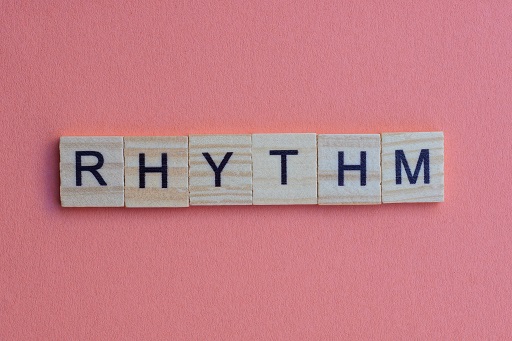8 Stress and rhythm
All words are comprised of stressed and unstressed syllables. Any line of poetry (or, indeed, any text) can be marked to show which syllables are stressed and which are unstressed. The act of mapping out stress patterns, usually by placing the appropriate symbols over the syllables, is known as scansion.
To scan a line of poetry, say it out loud, without thinking about it unduly. Listen for which syllables you naturally emphasise. The stressed syllables can be indicated with the symbol /, while U indicates unstressed syllables. So the marks for Tum-ti-Tum would be: /U/.
Sets of stressed and unstressed syllables can be used in various patterns, known as feet. Some commonly used feet are as follows:
iamb=U/=ti-Tum (e.g. about)
trochee=/U=Tum-ti (e.g. water)
anapest=UU/= ti-ti-Tum (e.g. in a box)
dactyl=/UU=Tum-ti-ti (e.g. ‘happily’)
spondee=//=Tum-Tum (e.g. Big Bang)
Remember that these are technical names for rhythms that happen naturally. Don’t worry if you can’t remember the name of a particular rhythm. In all likelihood you will be using it.

Activity 21
Is your name iambic? Trochaic? Say out loud your own name and the names of your friends and family. Listen to the rhythm and try to identify the rhythmic feet in each name. Does the pattern vary when you put the first name together with the last name and middle names?
Answer
Here are some samples:
U/ – maRIE (iambic)
/U – MAry (trochaic)
UU/ – mariANNE (anapestic)
/UU – MArion (dactylic)
// – MA (spondaic).
Or you might have something like:
U/U – maRIa (amphibrachic)
/U/ – MAry ANN (cretic)
These last two feet are less common in poetry in English than the first five.
Activity 22
Read the following, which are written in and are about dialect.
‘No dialects please … ’ by Merle Collins
‘Mama Dot warns against an Easter rising’ by Fred D’Aguiar
‘Them & [uz]’ by Tony Harrison
Click on the link below to read the poems.
No dialects please, Mama Dot warns against an Easter rising and Them & [uz] [Tip: hold Ctrl and click a link to open it in a new tab. (Hide tip)]
Answer
Notice how the poems touch on questions of nationality and class. They may seem subversive in some way as if they are challenging the status quo, but in fact they are merely stating that they have an equal right to be presented as poetry. These apparently rebellious poems even contain elements of the technique and tradition against which they are supposedly rebelling. Notice how the Harrison poem, for instance, is written in an apparently anarchic form – using initials, brackets, different typeface, phonetic spelling, etc. It seems that nothing is holding it together; even the stanzas are irregular – some sestets, couplets and some of only one line. Yet if you look a little closer you’ll see it is written in rhyming couplets that bind the fragments tightly together. Harrison says of this poem that it is a larger form of sonnet.
